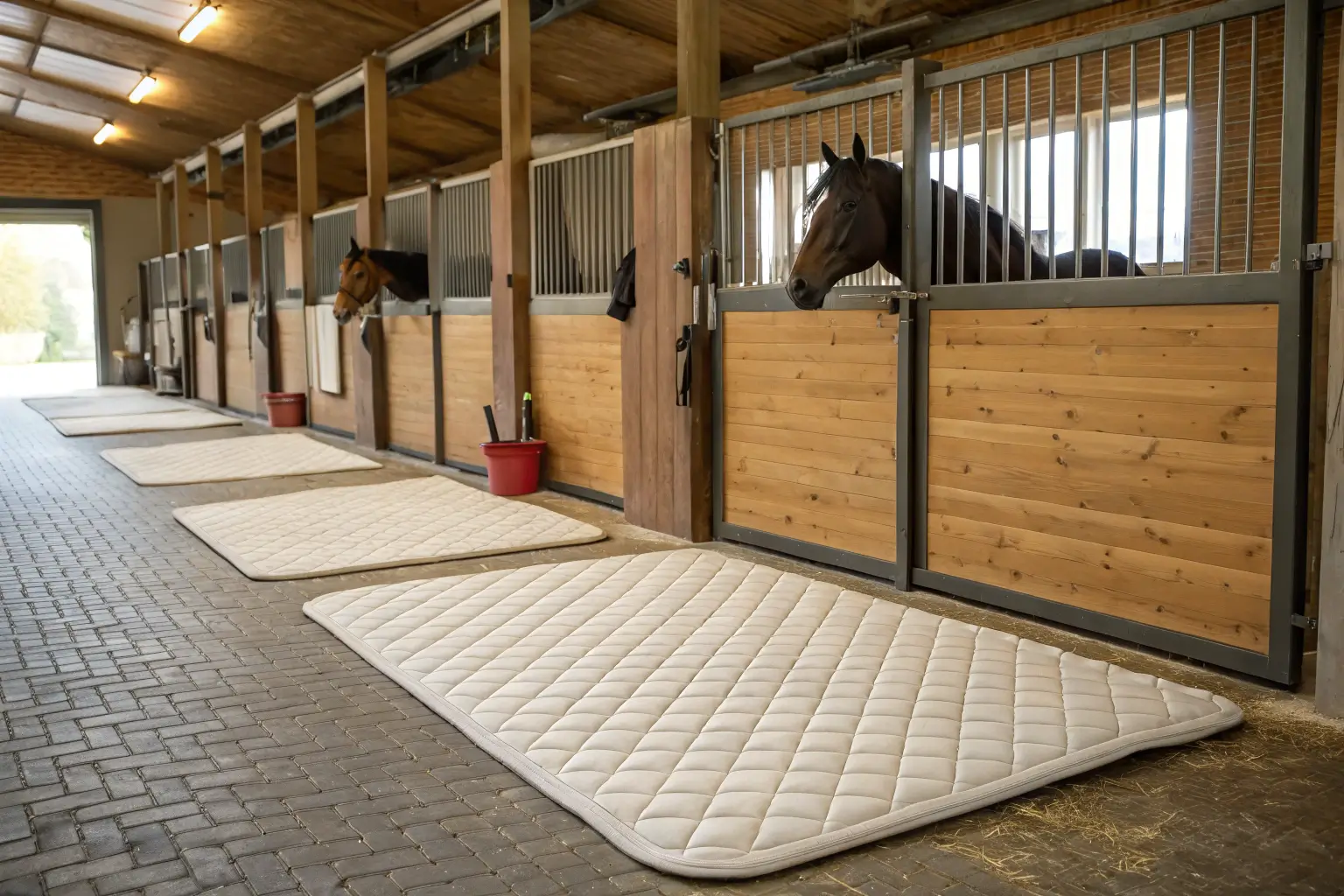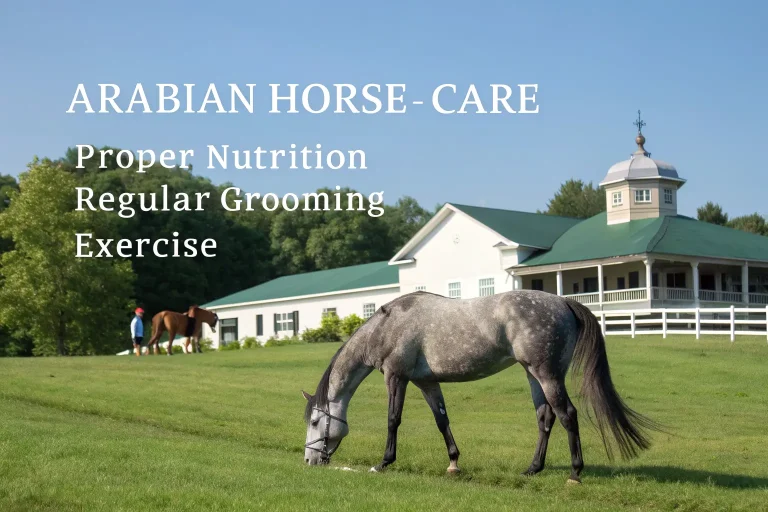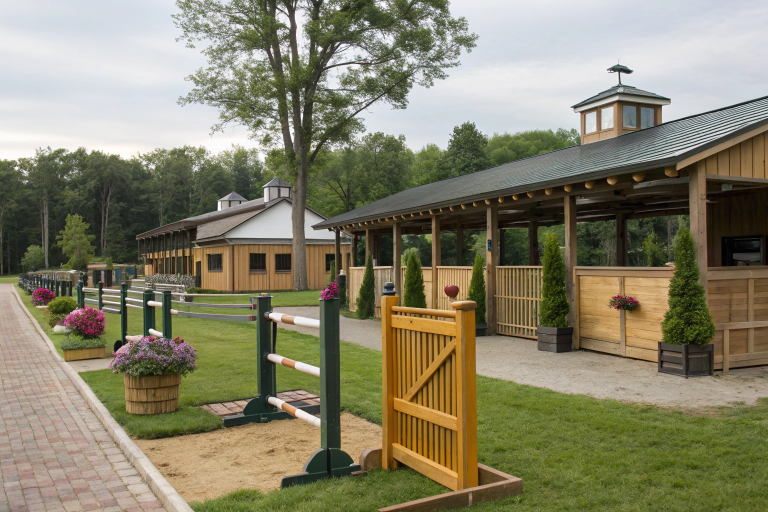Horse Stall Mats 101: How to Choose the Best for Your Equine Friends
Selecting the right horse stall mats is a crucial decision that directly impacts your horse’s comfort, health, and your stable maintenance routine. Quality horse stall mats provide essential cushioning for your equine companion’s joints, insulation from cold floors, and protection against the development of hoof problems. With numerous options available in today’s market, finding the perfect balance between durability, comfort, and cost-effectiveness can be challenging for both new and experienced horse owners.
Understanding the Importance of Quality Stall Flooring
When it comes to equine care, the foundation literally starts from the ground up. Horse stall mats serve as more than just floor coverings—they’re an investment in your horse’s wellbeing. Horses spend between 18-22 hours daily in their stalls, making proper flooring essential for preventing leg fatigue, reducing joint stress, and minimizing the risk of injuries.
Quality horse stall mats create a stable, non-slip surface that helps prevent accidents during movement. They also provide crucial thermal insulation, keeping horses warmer in winter and cooler in summer compared to bare concrete or dirt floors. Additionally, proper matting significantly reduces the amount of bedding needed, saving both time and money on stable management.
A 2019 study in the Journal of Equine Veterinary Science found that horses housed on properly cushioned surfaces showed 32% fewer lower limb issues over a five-year period compared to those on inadequate flooring. This compelling evidence underscores why investing in quality horse stall mats should be a priority for any responsible equine caretaker.
Types of Horse Stall Mats Available
The market offers several varieties of horse stall mats, each with distinct advantages and potential drawbacks:
Rubber Mats
Rubber horse stall mats are the most common and widely used option, available in several forms:
- Recycled Rubber Mats: Typically 3/4″ to 1″ thick, these environmentally friendly options offer good durability at a moderate price point. They’re made from recycled tires and provide reasonable cushioning.
- Virgin Rubber Mats: Made from new rubber without recycled content, these premium mats offer superior durability, consistent density, and longer lifespans, though at a higher cost.
- Interlocking Rubber Mats: These puzzle-piece designed mats reduce shifting and create a more seamless floor surface. They’re excellent for preventing seepage but may be more challenging to install initially.
EVA Foam Mats
Ethylene-vinyl acetate (EVA) foam mats provide superior cushioning compared to rubber. They’re significantly lighter and easier to install but generally less durable for heavy horses. These mats excel in rehabilitation stalls or for senior horses requiring extra joint support.
Composite Mats
Combining materials like rubber with polyurethane or other synthetics, composite horse stall mats aim to balance durability with comfort. They typically offer excellent drainage capabilities and moderate cushioning at a mid-range price point.
Key Factors to Consider When Choosing Horse Stall Mats
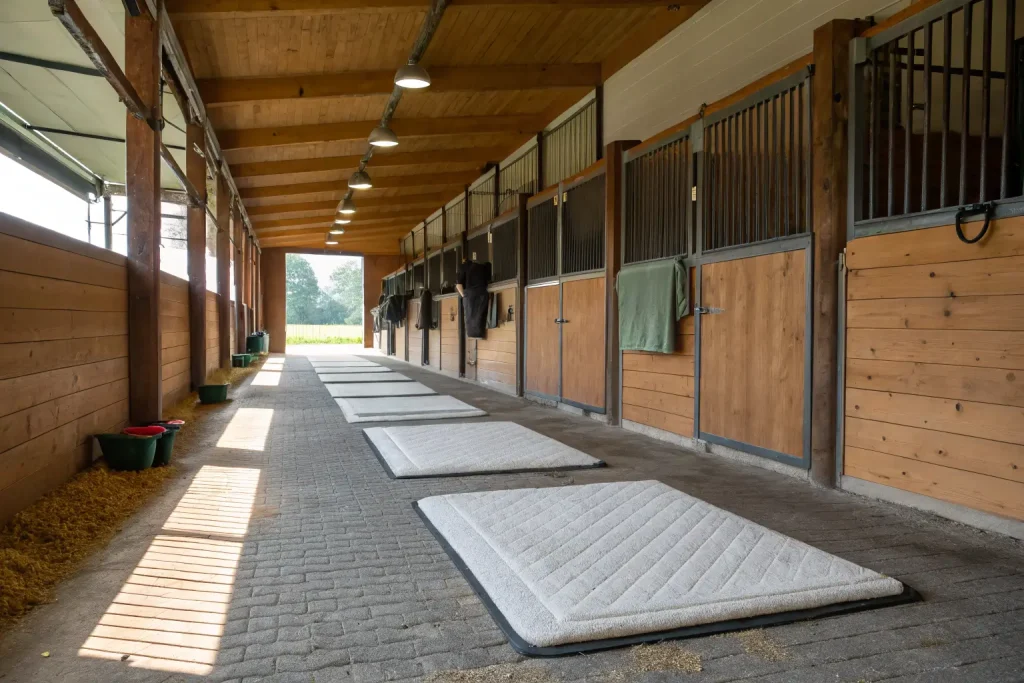
Thickness and Density
The thickness of horse stall mats significantly impacts both comfort and durability:
- 3/4-inch mats: The standard minimum thickness, suitable for average-sized horses in typical conditions
- 1-inch mats: Preferred for larger breeds or competition horses needing extra cushioning
- 1.5-inch+ mats: Premium options providing maximum comfort and insulation, ideal for rehabilitation spaces
Density correlates with durability—higher-density mats withstand more pressure but may offer less cushioning. The perfect balance depends on your specific horse’s needs and weight.
Size and Configuration
Standard horse stall mats typically come in:
- 4’×6′ rectangles (most common)
- 4’×8′ rectangles
- 6’×6′ squares
- Custom-cut options for unusual stall dimensions
Consider your stall size carefully before purchasing. Ideally, you want complete coverage with minimal seams, as seams can collect debris and occasionally trap hooves if they separate over time.
Surface Texture
The texture of horse stall mats affects both traction and cleaning ease:
- Button/pebble top: Provides excellent traction but may be slightly harder to clean thoroughly
- Flat/smooth surface: Easier to clean but potentially more slippery when wet
- Grooved bottom: Facilitates drainage and prevents moisture buildup beneath the mats
For most applications, a slightly textured top with drainage channels on the bottom offers the best combination of safety and practicality.
Installation Best Practices for Horse Stall Mats
Proper installation of horse stall mats ensures maximum benefit and longevity. Follow these professional guidelines for the best results:
Prepare the base properly: Start with a level, compacted surface. Options include:
- Compacted crushed stone (ideal for drainage)
- Concrete (provides stability but requires additional drainage consideration)
- Compacted dirt (economical but may settle unevenly)
Acclimatize your mats: Allow horse stall mats to adjust to the ambient temperature for 24-48 hours before installation, particularly in extreme weather conditions. This minimizes expansion or contraction after placement.
Create proper layout: Plan your mat configuration to minimize seams and ensure full coverage. Stagger seams when possible, similar to brick laying patterns, for increased stability.
Use appropriate tools: Heavy-duty utility knives, straight edges, and rubber mallets are essential for proper cuts and positioning.
Leave expansion gaps: Allow a 1/4-inch gap between mats and walls to accommodate temperature fluctuations and prevent buckling.
Professional installation typically costs $2-4 per square foot beyond the mat price but can significantly extend the lifespan of your investment.
Maintenance and Cleaning of Horse Stall Mats
Proper maintenance not only extends the life of your horse stall mats but also provides a healthier environment for your equine companion:
Daily Cleaning Routine
- Remove manure and wet bedding promptly
- Sweep dry areas to prevent debris accumulation
- Check for and address any shifting or separation of mats
Deep Cleaning Protocol
For a thorough quarterly cleaning:
- Remove all bedding and temporarily relocate your horse
- Lift mats if possible (a two-person job) and clean underneath
- Wash mats with mild soap and water (avoid harsh chemicals)
- Disinfect with a horse-safe disinfectant such as Virkon-S or diluted bleach (1:10 ratio)
- Allow to dry completely before replacing bedding
Addressing Common Issues
- Odor control: Sprinkle baking soda under mats during deep cleaning to neutralize ammonia smells
- Mold prevention: Ensure proper drainage and verify mats dry completely after washing
- Seam separation: Use mat tape or connectors to secure problematic areas
- Curling edges: Apply weight temporarily or use mat edging products to retrain the shape
With proper maintenance, quality horse stall mats should last 8-10 years before requiring replacement.
Cost Considerations and Budget Planning
Horse stall mats represent a significant initial investment that pays dividends in reduced bedding costs and veterinary bills over time:
Price Ranges by Type
| Mat Type | Price Per Square Foot | Estimated Total for 12’×12′ Stall |
|---|---|---|
| Basic Recycled Rubber (3/4″) | $1.75-$2.50 | $250-$360 |
| Premium Virgin Rubber (1″) | $2.75-$4.00 | $400-$575 |
| Interlocking Systems | $3.25-$5.50 | $470-$790 |
| EVA Foam Mats | $4.00-$7.00 | $575-$1,000 |
| Custom Composite Solutions | $5.00-$10.00 | $720-$1,440 |
Long-Term Value Considerations
When calculating the true cost of horse stall mats, consider these factors:
- Bedding savings: Quality mats can reduce bedding usage by 30-50%
- Labor reduction: Easier cleaning and maintenance saves approximately 15-20 minutes daily per stall
- Veterinary costs: Proper cushioning may prevent expensive joint and hoof issues
- Replacement timeline: Higher-quality mats may cost more initially but typically last 2-3 years longer
Most professional stable managers report that premium horse stall mats pay for themselves within 18-24 months through reduced maintenance and bedding costs.
Specialized Solutions for Different Situations
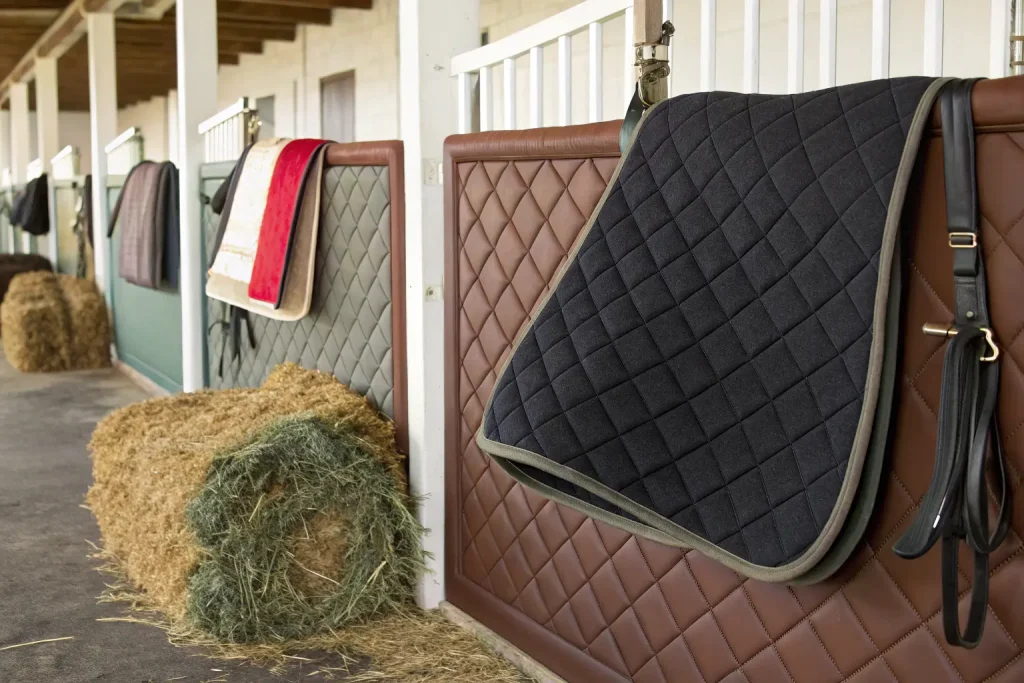
Mats for Rehabilitation Stalls
Horses recovering from injury benefit from specialized rehabilitation flooring:
- Extra cushioning (minimum 1.5-inch thickness)
- Superior shock absorption
- Anti-fatigue properties
- Often combine rubber base layers with foam top layers
Foaling Stall Considerations
Foaling stalls require particular attention to safety and cleanliness:
- Non-slip surfaces to prevent newborn stumbles
- Exceptional drainage properties
- Seamless installation when possible
- Rounded edges and corners
- Antimicrobial treatments recommended
Wash Stall Mat Solutions
Wash areas have unique requirements:
- Enhanced drainage channels or perforated designs
- Maximum slip resistance when wet
- UV-stabilized materials if outdoors
- Sloped installation toward drains
- Mildew-resistant properties
Innovations in Horse Stall Mat Technology
The equine flooring industry continues to evolve with exciting new developments:
Antimicrobial Treatments
Modern horse stall mats can incorporate silver-ion or zinc-based antimicrobial treatments that inhibit bacteria and fungal growth, reducing ammonia production and respiratory irritants. These treatments add approximately 15-20% to the base cost but can create significantly healthier stable environments.
Thermal Regulation Features
Advanced composite mats now offer thermal regulation properties that help:
- Reflect body heat back to the horse in winter
- Dissipate excess heat during summer months
- Maintain more consistent stall temperatures year-round
Environmental Sustainability
Eco-conscious options include:
- Mats manufactured using solar power
- 100% recyclable materials
- Zero-waste manufacturing processes
- Reduced chemical off-gassing
DIY vs. Professional Installation
Should you install horse stall mats yourself or hire professionals? Consider these factors:
DIY Installation Pros and Cons
Advantages:
- Cost savings ($200-400 for average stall)
- Flexibility in timing
- Personal quality control
Challenges:
- Heavy lifting (standard 4’×6′ mats weigh 90-110 pounds)
- Precision cutting requires specialized tools
- Time-intensive (4-6 hours per stall for inexperienced installers)
Professional Installation Benefits
- Experience with proper base preparation
- Efficient installation (typically 1-2 hours per stall)
- Access to commercial-grade cutting tools
- Warranty on installation work
- Knowledge of proper drainage considerations
Most manufacturers recommend professional installation for optimal performance and warranty coverage, particularly for complex stall configurations.
Real-World Performance: User Experiences
According to a 2021 survey of 500 stable owners conducted by Equine Management Monthly:
- 78% of respondents rated rubber horse stall mats as their preferred flooring solution
- Facility owners with premium 1-inch or thicker mats reported 43% fewer leg-related veterinary visits
- 91% of those with properly installed professional-grade mats would make the same purchase again
- The most common complaint (64% of dissatisfied users) was related to improper installation rather than the mats themselves
One stable owner reported: “After switching to 1-inch interlocking stall mats throughout our 24-stall facility, we’ve cut our bedding costs in half and reduced our stall cleaning time by nearly 30%. The initial investment was substantial, but the return has been even greater.”
Frequently Asked Questions About Horse Stall Mats
How long do quality horse stall mats typically last?
With proper installation and maintenance, premium horse stall mats should last 8-10 years in standard use conditions. Budget options may need replacement after 5-7 years, while top-tier products in well-maintained stalls can sometimes exceed 12-15 years of service.
Can I use gym floor mats instead of horse stall mats?
While gym floor mats may appear similar, they’re designed for different weight loads and use patterns. Commercial gym mats typically can’t withstand the concentrated pressure of horse hooves, particularly from larger breeds. Additionally, they often lack the necessary moisture resistance for stable environments. The cost savings rarely justify the shortened lifespan and increased risk.
How do I prevent my horse stall mats from shifting or separating?
To minimize movement:
- Install on a properly prepared, level base
- Use mat tape or connectors at seams
- Consider interlocking designs
- Leave appropriate expansion gaps around edges
- Use heavy rubber mallet to fully seat mats together
- For persistent issues, consider adhesive designed specifically for rubber flooring
What’s the best way to cut horse stall mats for custom fitting?
For precise cuts:
- Mark your cutting line clearly with chalk
- Use a straight edge as a guide
- Score deeply with a sharp utility knife (change blades frequently)
- Make multiple passes, gradually cutting deeper
- For thick mats, consider using a jigsaw with a blade designed for rubber
- Allow minor imperfections along walls where they’ll be hidden
Are there health concerns with recycled rubber horse stall mats?
Quality recycled rubber mats from reputable manufacturers undergo processing that removes harmful chemicals. However, some budget options may retain trace compounds or have stronger odors. If concerned, look for products certified for low VOC emissions or opt for virgin rubber options, especially for horses with respiratory sensitivities.
Conclusion: Making Your Final Selection
Choosing the right horse stall mats ultimately comes down to balancing your specific needs, budget constraints, and your horse’s individual requirements. Consider these final recommendations:
For most horse owners, 3/4-inch to 1-inch recycled rubber mats from established manufacturers offer the best combination of durability, comfort, and value. Interlocking systems provide additional benefits for areas prone to shifting or moisture concerns.
Remember that proper installation is just as important as the quality of the mats themselves. Even the finest horse stall mats will underperform if installed incorrectly. Whether DIY or professional, don’t rush this critical step.
Finally, view quality horse stall mats as an investment in your equine partner’s health and your stable’s efficiency. The initial cost may be higher than bargain alternatives, but the long-term benefits to your horse’s wellbeing and your maintenance routine make premium options the wiser economic choice over time.
Your horse spends countless hours standing on their stall floor—make sure it’s a surface that supports their health and comfort for years to come.

